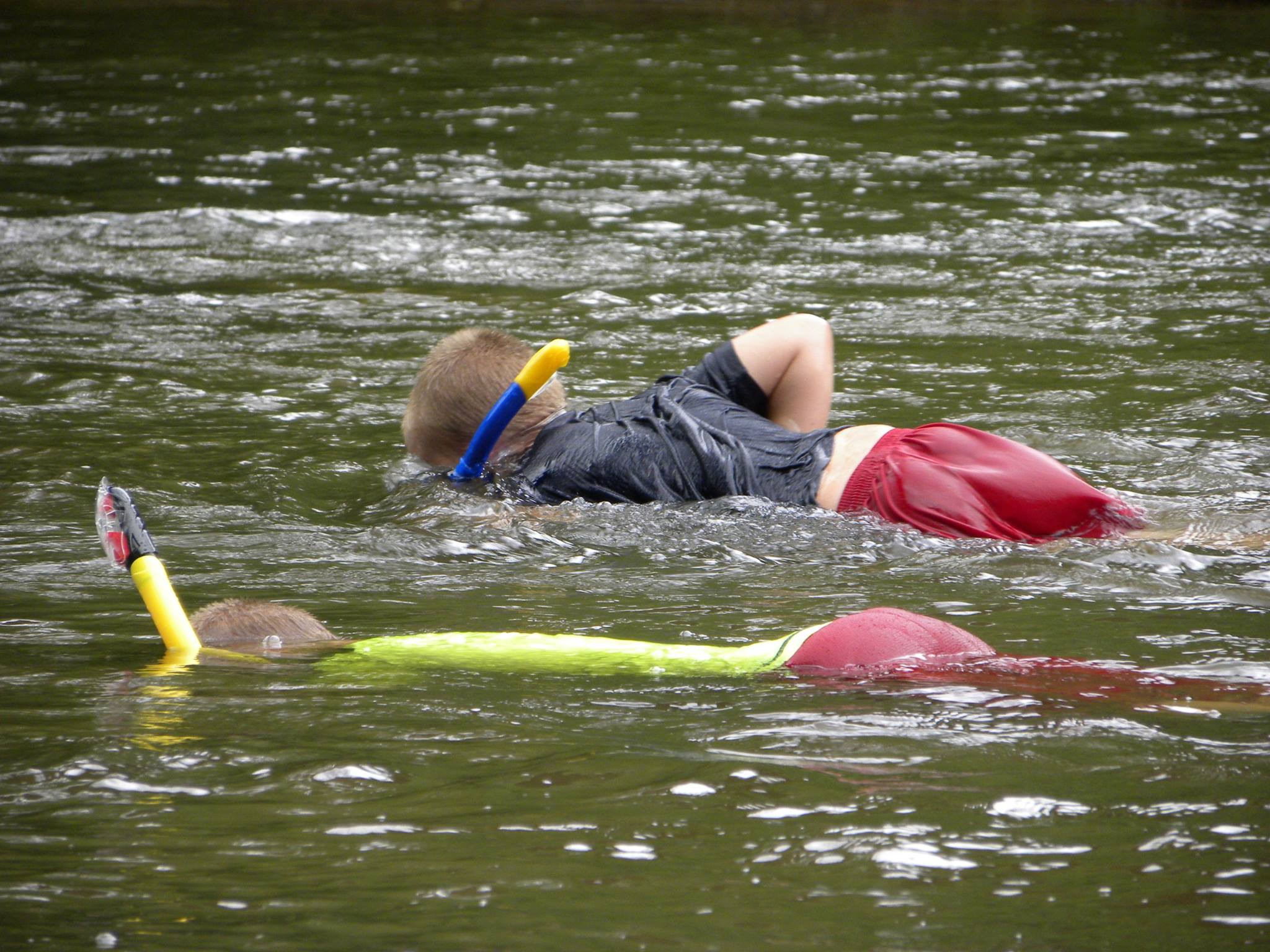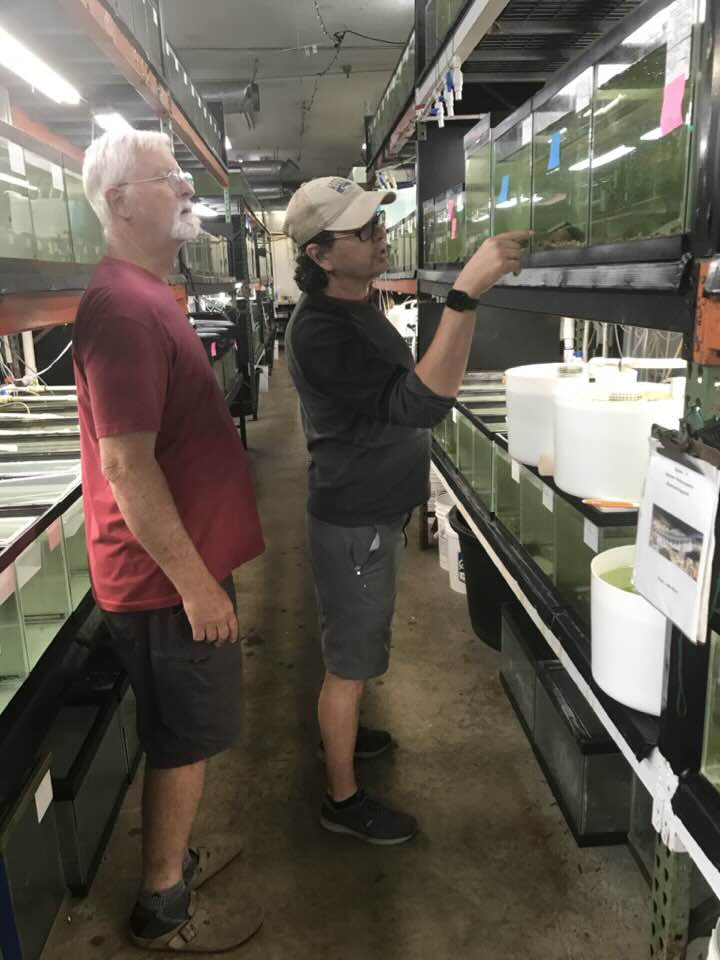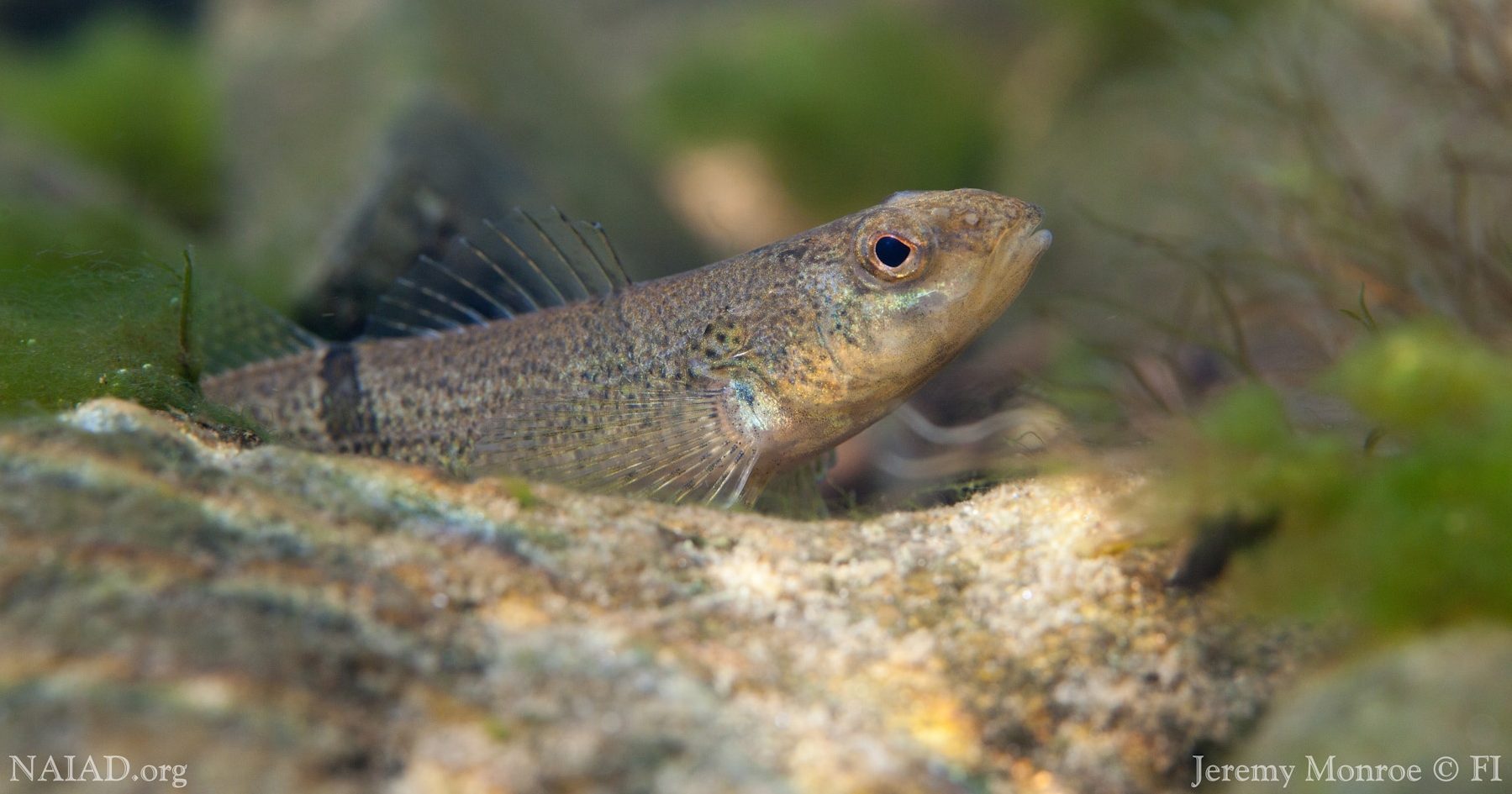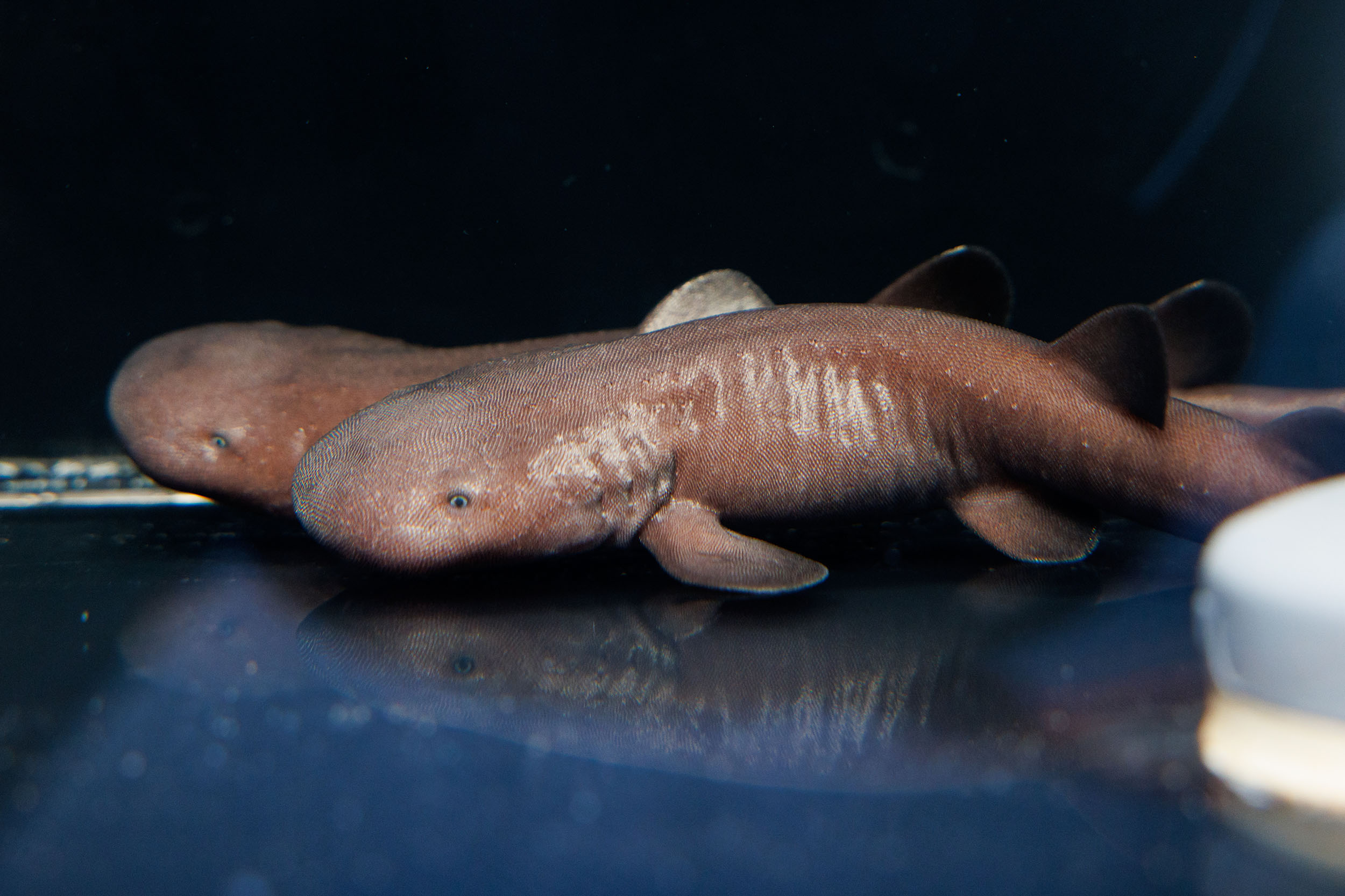
14 Life Below Water (83)
Conserve and sustainably use the oceans, seas and marine resources for sustainable development
Quaff some brews and pour some out on Endangered Species Day
 Barrens topminnow (Fundulus julisia) at Conservation Fisheries, a native stream fish breeding center. This species is endangered (IUCN). It is only found in the Barrens Plateau in middle Tennessee, making it one of the rarest fish in eastern North America. © Joel Sartore 2023
Barrens topminnow (Fundulus julisia) at Conservation Fisheries, a native stream fish breeding center. This species is endangered (IUCN). It is only found in the Barrens Plateau in middle Tennessee, making it one of the rarest fish in eastern North America. © Joel Sartore 2023
Friday, May 19 is Endangered Species Day. Not just in Knoxville. The U.S. Postal Service is celebrating the 50th anniversary of the Endangered Species Act by releasing a collection of stamps featuring endangered animals and fishes. All 4,000 of the Endangered Species Limited Edition Collector's Sets are already sold out, but other collector items are still available. The fish were photographed by Joel Sartore, a friend of local nonprofit Conservation Fisheries. His National Geographic Photo Ark collection also features boulder darters, which are native to the Elk River in Middle Tennessee and have been federally listed as endangered since 1988.
Here’s another link to the celebration: Endangered Species Day in the Old City.
Join in various festivities, ranging from Riverside Tattoo Flash Day to Pint Night at Merchants of Beer to honor those critters who may not be with us much longer.

Beneath the surface: Ahoy Appalachian creek snorkels
Written by Ray Zimmerman Kids snorkeling on the Little Tennessee River. Courtesy Jason Meador
Kids snorkeling on the Little Tennessee River. Courtesy Jason Meador
The Blue Ridge Snorkel Trail gets you down with Southern Appalachian fish
ASHEVILLE — Snorkeling and looking at freshwater fish are great ways to enjoy Southern streams, and visitors to Western North Carolina will soon have better access to it courtesy of North Carolina Snorkel Trail. Stream access points in numerous locations will boast signs about snorkeling, safety and fish identification.
The concept began with North Carolina Wildlife Resources Commission Mountain Habitat Conservation Coordinator Andrea Leslie, and Luke Etchison of the Western Region Inland Fisheries Division, which surveys aquatic animals by snorkeling. This allows them to look at populations of fish, crayfish and mussels.
Leslie told Hellbender Press she wants to encourage snorkeling tourism because people love streams, waterfalls and swimming. The sights below the waterline may be less familiar to the general public.
Southern mountain streams have fish as vibrant and exciting as the Caribbean Sea.
Hellbent: Conservation Fisheries saves what we don’t typically see
Written by JJ Stambaugh Conservation Fisheries Executive Director Bo Baxter (second from right) leads young students in an inventory of Little River fish. The “Stream School” collaboration with Little River Watershed Association gets kids in creeks and rivers. Michael Mollish /Tennessee Valley Authority
Conservation Fisheries Executive Director Bo Baxter (second from right) leads young students in an inventory of Little River fish. The “Stream School” collaboration with Little River Watershed Association gets kids in creeks and rivers. Michael Mollish /Tennessee Valley Authority
‘It’s very good for the soul.’ Bo Baxter and Conservation Fisheries focus underwater to save our Southern fishes.
This is the latest installment of an occasional series, Hellbent, profiling citizens and organizations who work to preserve and improve the Southern Appalachian environment.
KNOXVILLE — For more than 35 years, an obscure nonprofit headquartered here has grown into one of the most quietly successful champions of ecology and environmental restoration in the Eastern United States.
Conservation Fisheries, which occupies a 5,000-square foot facility near the Pellissippi State University campus on Division Street, has spent nearly four decades restoring native fish populations to numerous waterways damaged years ago by misguided governmental policies.
In fact, the mid-20th century saw wildlife officials frequently exterminating key aquatic species to make way for game fish like trout.
“It was bad science, but it was the best they had at the time,” said Conservation Fisheries Executive Director Bo Baxter. “A lot of the central concepts of ecology, like food webs and communities, were not developed back then.”
From soil to sky: Will the misty microclimates of the Smokies prevail in a warming world?
Written by Élan Young With the help of GPS coordinates and survey flags, Jordan Stark is able to deploy and locate the exact off-trail placement of soil moisture sensors she placed in Great Smoky Mountains National Park as part of her graduate research at Syracuse University. Elan Young/Hellbender Press
With the help of GPS coordinates and survey flags, Jordan Stark is able to deploy and locate the exact off-trail placement of soil moisture sensors she placed in Great Smoky Mountains National Park as part of her graduate research at Syracuse University. Elan Young/Hellbender Press
Foundational ecology moves from before times to nowadays in the Smokies
GATLINBURG — In the Middle Ages, salamanders were thought to come from fire. A log set on the hearth would send them scurrying out of the rotten wood, startling those who had gathered around for warmth. We now know that salamanders, of course, come from water — even the European fire salamander with its flame-like yellow markings.
Over the last 20 years of getting my boots soggy in Great Smoky Mountains National Park, I know these creatures to thrive in the clean, shallow streams and trickles of this temperate rainforest, where annual precipitation is higher than anywhere in the U.S. save for the Pacific Northwest.
One way to become acquainted with the park is through the water that veins through the hills and is transmuted into vapor that floats on the air in misty silence. After a rain, you can slake your thirst from the pools formed in the creases of broad rhododendron leaves. Sit by a shallow, fishless stream for long enough and you might spot the quick movement of a salamander tail, maybe a flash of orange or brown, or notice a tiny black amphibian face peeking out from behind a smooth stone in the creek.
- jordan stark
- european fire salamander
- southern appalachian soil monitoring
- great smoky mountains national park
- soil monitoring in smokies
- smokies soil study
- elan young
- jason fridley clemson
- macroscale
- microscale ecology
- rh whittaker
- shaconage
- smoky mountain salamander
- salamander biodiversity
- clemson department of biological sciences
Silent Spring Revolution: The Dawn of the Climate Change Movement
Written by Douglas BrinkleyBo Baxter takes helm of the crucial nonprofit Conservation Fisheries
Written by Thomas Fraser Bo Baxter (right) and JR Shute examine one of many tanks hosting native fish species at Conservation Fisheries in this photo taken last year. Thomas Fraser/Hellbender Press
Bo Baxter (right) and JR Shute examine one of many tanks hosting native fish species at Conservation Fisheries in this photo taken last year. Thomas Fraser/Hellbender Press
JR Shute and Pat Rakes declare semi-retirement, hand over operations to Hellbender Press board member
KNOXVILLE — A career biologist with deep experience in Southern Appalachian aquatic systems is the new captain of Conservation Fisheries.
The highly productive and robust nonprofit aims to secure, augment, preserve and protect the aquatic environs of the Southeast, namely through the reintroduction of native fish to areas they once inhabited
Bo Baxter spent 25 years as a conservation biologist at the Tennessee Valley Authority. He became an active board member at Conservation Fisheries, Inc. (CFI) upon his retirement from TVA. He soaked up knowledge of its operations and was named executive director as of Oct. 20. His path comes full circle, as he was one of the first paid staff members at Conservation Fisheries, some three decades ago.
Baxter is a member of the Hellbender Press editorial board.

Human activities have imperiled our waterways — along with a third of freshwater fish and other aquatic species
This story was originally published by The Revelator.
If we needed more motivation to save our ailing rivers, it could come with the findings of a recent study that determined the biodiversity crisis is most acute in freshwater ecosystems, which thread the Southern landscape like crucial veins and arteries.
Rivers, lakes and inland wetlands cover 1 percent of the Earth but provide homes for 10 percent of all its species, including one-third of all vertebrates. And many of those species are imperiled — some 27 percent of the nearly 30,000 freshwater species so far assessed by the IUCN Red List. This includes nearly one-third of all freshwater fish.
How did things get so bad? For some species it’s a single action — like building a dam. But for most, it’s a confluence of factors — an accumulation of harm — that builds for years or decades.
- freshwater science
- threats to rivers
- the conversation
- biodiversity
- freshwater biodiversity
- what are biggest threats to rivers and water
- are dams bad
- climate change in appalachia
- threats to clean water
- tara lohan
- dam obstructions
- grazing impacts on waterways
- river democracy act
- climate change
- dams
- water pollution
- freshwater pollution
- pollution prevention
- conservation fisheries
For the win: The storied snail darter swims back from the brink
Written by Southern Environmental Law Center The snail darter, which caused an epic battle around TVA plans to dam the Tellico River in the 1970s, was recently removed from the Endangered Species List. Jeremy Monroe/Tennessee Aquarium
The snail darter, which caused an epic battle around TVA plans to dam the Tellico River in the 1970s, was recently removed from the Endangered Species List. Jeremy Monroe/Tennessee Aquarium
The little fish that caused a maelstrom over a TVA dam project gets the last laugh
TELLICO — In a win for endangered species protected by federal law, the U.S. Fish and Wildlife Service announced this week the fabled snail darter’s recovery and removal from the Federal List of Threatened and Endangered Wildlife.
Native to the Tennessee River watershed in Alabama, Georgia, Mississippi and Tennessee, the fish has long been an Endangered Species Act icon thanks to conservation efforts to save its habitat starting in the 1970s, when the Tennessee Valley Authority proposed construction of a dam on the Little Tennessee River. The snail darter (Percina tanasi) was central in the 1978 U.S. Supreme Court case Tennessee Valley Authority v. Hill, which solidified the scope of the then recently passed ESA.
- snail darter
- endangered species
- endangered species act
- tellico dam
- southern environmental law center
- snail darter removed from endangered species list
- tva vs hill
- little tennessee river
- eastern band of cherokee indians
- ramona mcgee
- george nolan
- tennessee valley authority v hill
- habitat conservation
- us supreme court
- percina tanasi
- threatened species
Hellbent Profile: If you pollute the Tennessee River, Chris Irwin is coming for you
Written by Thomas Fraser Chris Irwin poses by the Tennessee River as a TVA vessel makes its way downstream. Thomas Fraser/Hellbender Press
Chris Irwin poses by the Tennessee River as a TVA vessel makes its way downstream. Thomas Fraser/Hellbender Press
From the courthouse to the river, Chris Irwin strives for purity
This is the first installment of an occasional series, Hellbent, profiling citizens who work to preserve and improve the Southern Appalachian environment.
KNOXVILLE — Chris Irwin scarfed some french fries and drank a beer and told me about his plans to save the Tennessee River.
We sat at a riverside restaurant downtown between the bridges. Not even carp came up to eat a stray fry, but a mallard family hit the free starch hard.
I asked him what he saw as we looked out over the river in the still heat of late summer.
“You know what I don’t see?” he said. “People swimming.” It was truth. Nobody was fishing either, in the heart of a metro area pushing a million people. Signs warning against swimming and fishing weren’t readily visible, but he said an instinctive human revulsion likely makes such warnings unnecessary.
“We all know it’s an industrial drainage ditch.”
Skunked: Collapsing fisheries pose a dire threat to the planet
Written by Coty Perry A purse seine on a Chilean fishing vessel captures tons of mackerel. NOAA
A purse seine on a Chilean fishing vessel captures tons of mackerel. NOAA
We need to navigate to where fish sticks in your mind
You can read Coty Perry’s full report on overfishing at YourBassGuy.com.
When you hear about sustainability, one thing that often flies under the finder is the topic of overfishing. Many will say that overfishing is a natural response to the need for more fish, but it runs much deeper than that.
The goal of this article is not to shame any specific industry, country or company. The goal is to shine light on an issue I believe is highly under-reported by mainstream media.
More...
 Tennessee Aquarium
Tennessee AquariumTennessee Aquarium hatches endangered shark species
CHATTANOOGA — The Tennessee Aquarium reached a significant milestone just in time for Shark Week with the recent hatching of three critically endangered short-tail nurse shark pups.
The diminutive youngsters, which hatched July 7, are the product of three adult short-tail nurse sharks — one male and two females — which arrived at the aquarium along with eight juveniles and eight fertilized eggs from a facility in Canada last year.
Falcons in flight: Gatlinburg couple earns top conservation honors from Tennessee Wildlife Federation
Written by Deborah Sosower![Worsham Conservationist of the Year1]() Arrowmont supporters Margit and Earl Worsham named Conservationists of the Year by Tennessee Wildlife Federation
Arrowmont supporters Margit and Earl Worsham named Conservationists of the Year by Tennessee Wildlife Federation
This story was provided by Arrowmont School of Arts and Crafts.
GATLINBURG — Margit and Earl Worsham stood in front of family, friends, and fellow conservationists on stage in Nashville this spring and were presented with a unique award of mahogany shaped like a peregrine falcon in flight.
They were named the Tennessee Wildlife Federation’s 2022 Conservationists of the Year at the federation’s 57th Annual Conservation Awards in May.
It’s a prestigious honor presented to nominees considered to have the most significant contribution to the cause of natural resources conservation in Tennessee.
HuffPost: More than 50 House Republicans want to repeal a century-old excise tax that bankrolls wildlife conservation
In the latest “gun rights” lash-out from the GOP, legislation has been filed to abolish firearms taxes levied on gunmakers that fund wildlife conservation.
The Republican legislation is framed as a way to defend gun purchasers from odious taxation under the 2nd Amendment umbrella, but leading hunting and fishing interests said the proposal is misguided and misses the target by a wide mark.
The levy as currently written applies to gunmakers, not individual firearms purchasers.
Tennessee Aquarium diversifies its scientific assets
Written by Casey Phillips Jim Hill Fellow for Conservation Breelyn Bigbee holds a viewing window with a logperch in Long Swamp Creek while conducting fieldwork in search of bridled darters near Jasper, Georgia. Tennessee Aquarium
Jim Hill Fellow for Conservation Breelyn Bigbee holds a viewing window with a logperch in Long Swamp Creek while conducting fieldwork in search of bridled darters near Jasper, Georgia. Tennessee Aquarium
Tennessee Aquarium fellowships bring minorities into the science space
CHATTANOOGA — Never let it be said that all summer jobs are created equal.
Squatting on his heels to dangle the flexible hose of an environmental DNA pump into a briskly flowing North Georgia stream, the last few weeks have been anything but ordinary for Spencer Trimpe. With the pump’s droning motor steadily collecting a sample of water to filter out genetic traces of the stream’s inhabitants, he doesn’t bother holding back a smile.
A lanky junior biology major from Thomas More University, Trimpe is one of two students selected as part of the Tennessee Aquarium’s George Benz Aquatic Ecology Fellowship. Instead of manning a cash register or waiting tables this summer, he’s assisting freshwater scientists from the Tennessee Aquarium Conservation Institute with a variety of research projects.
